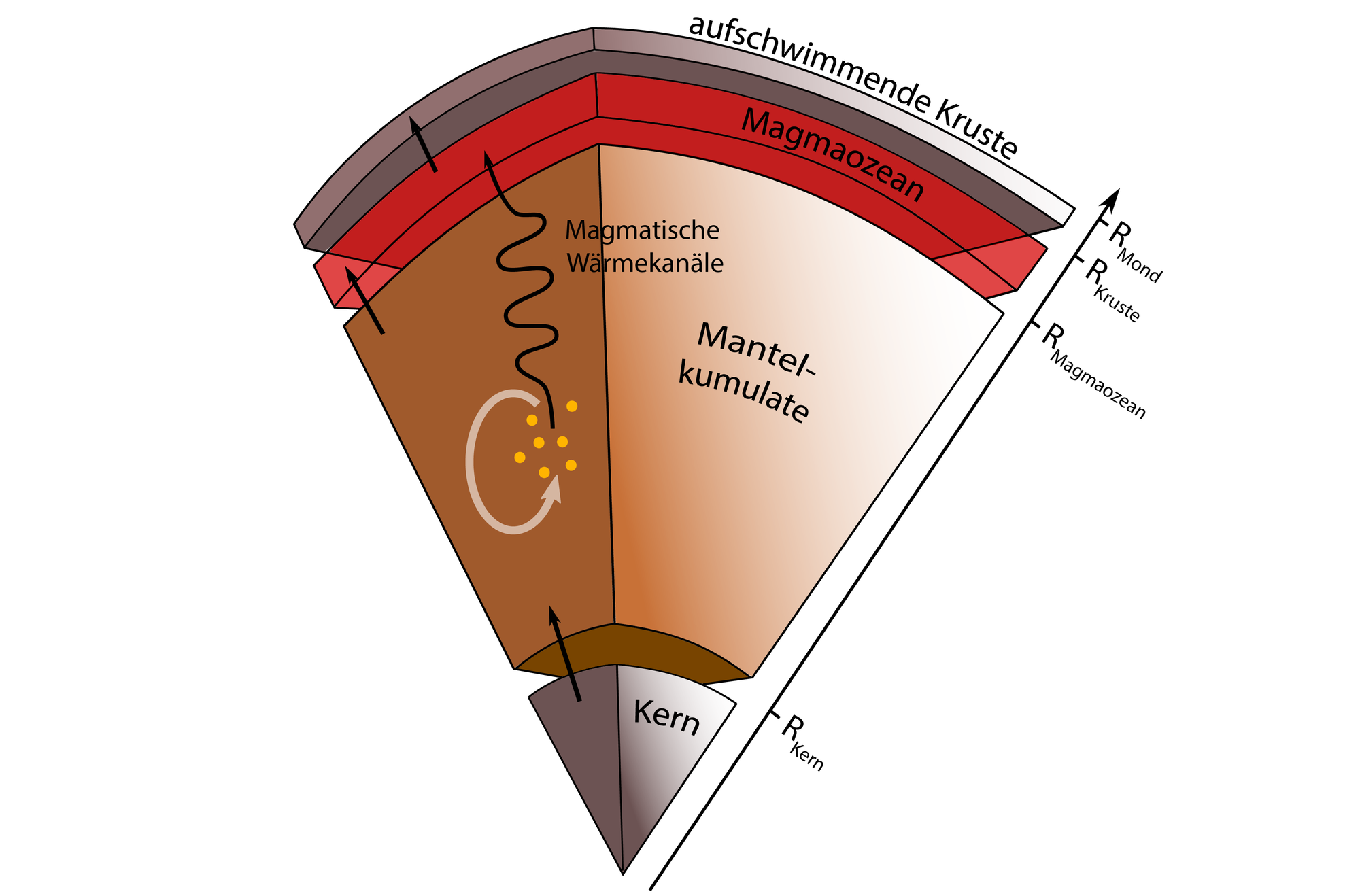Schematic structure of the early Moon’s interior
Schematic structure of the early Moon’s interior
After the Moon was formed 4.425 billion years ago, heavy material from the solidifying magma ocean settled. The heaviest components formed a metallic core, and the lighter ones a silicate mantle. Such rocks formed from the magma ocean are also called cumulates and are heavier than the remaining melt. The exception – in a late phase of evolution of the magma ocean the mineral plagioclase, an aluminium-calcium-silicate, which belongs to the group of feldspars, was formed. Plagioclase was lighter than the melt and rose to the magma ocean’s surface, where it formed the early lunar crust. The Moon cooled down through various heat transport processes, including convection in the magma ocean and in the solid lunar mantle, but also through the transport of melts from the mantle cumulates through magmatic heat channels.

